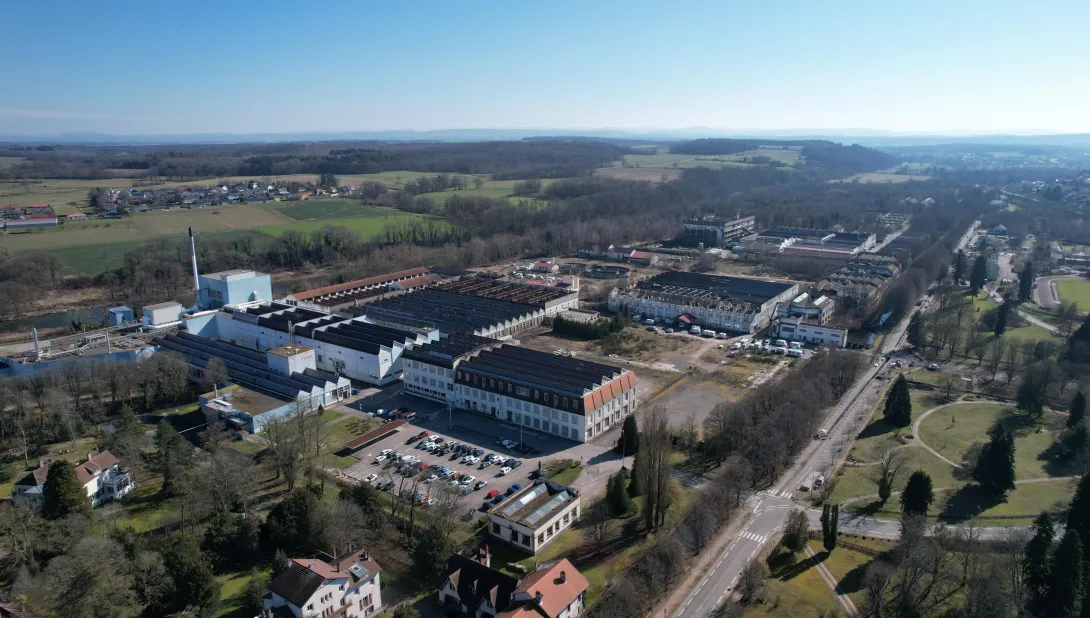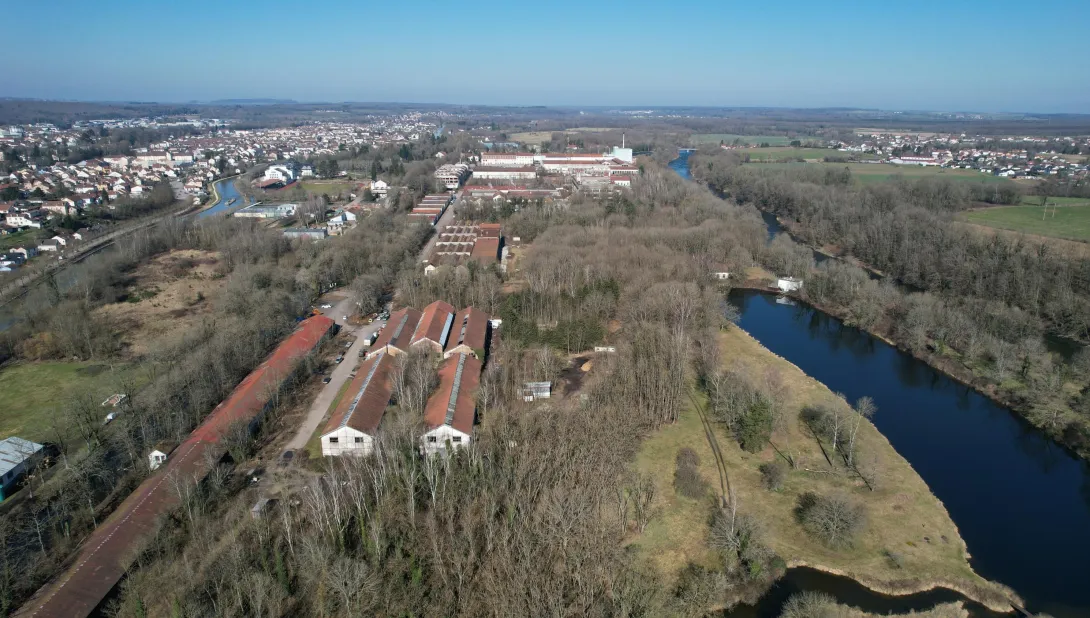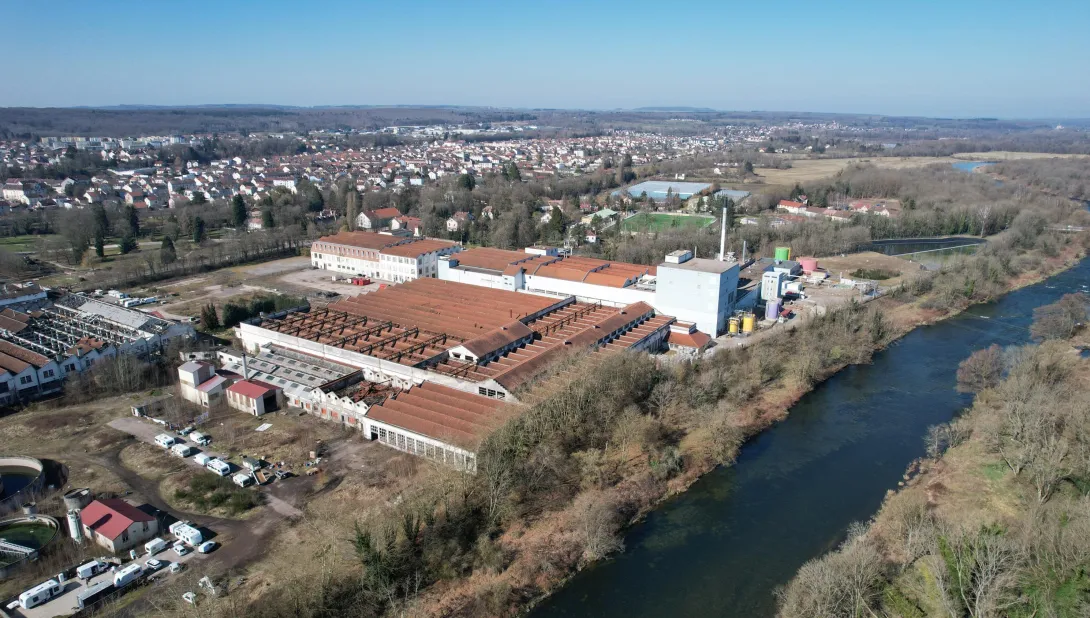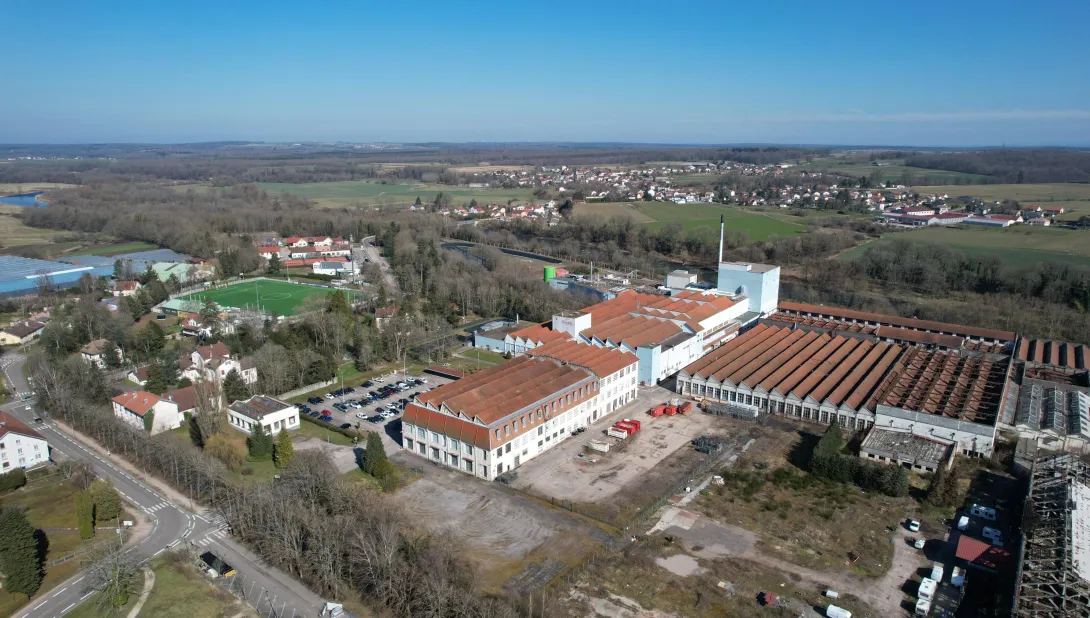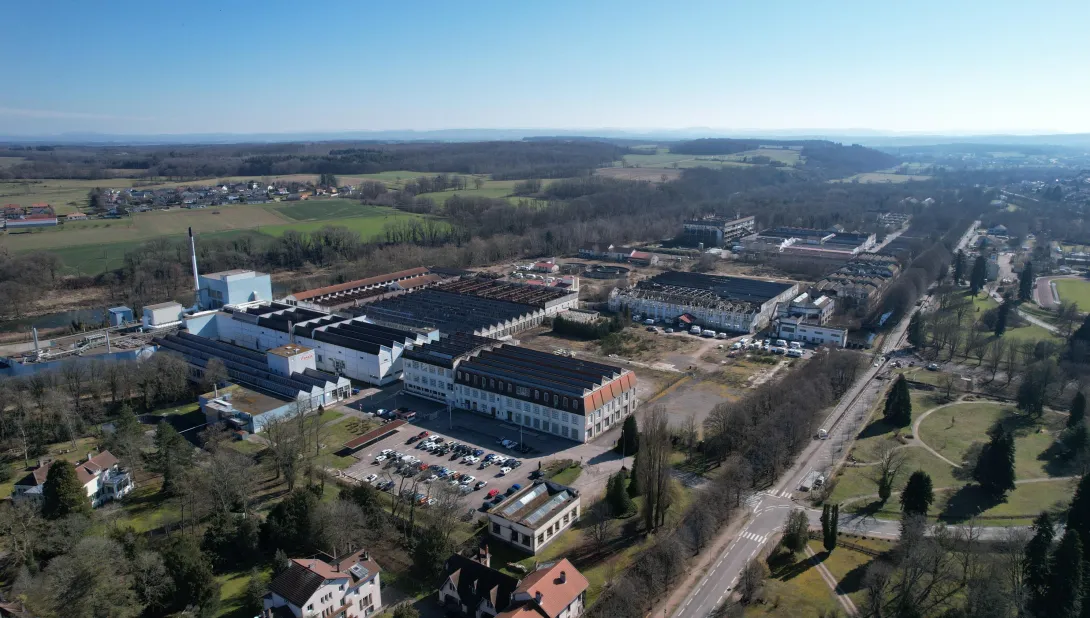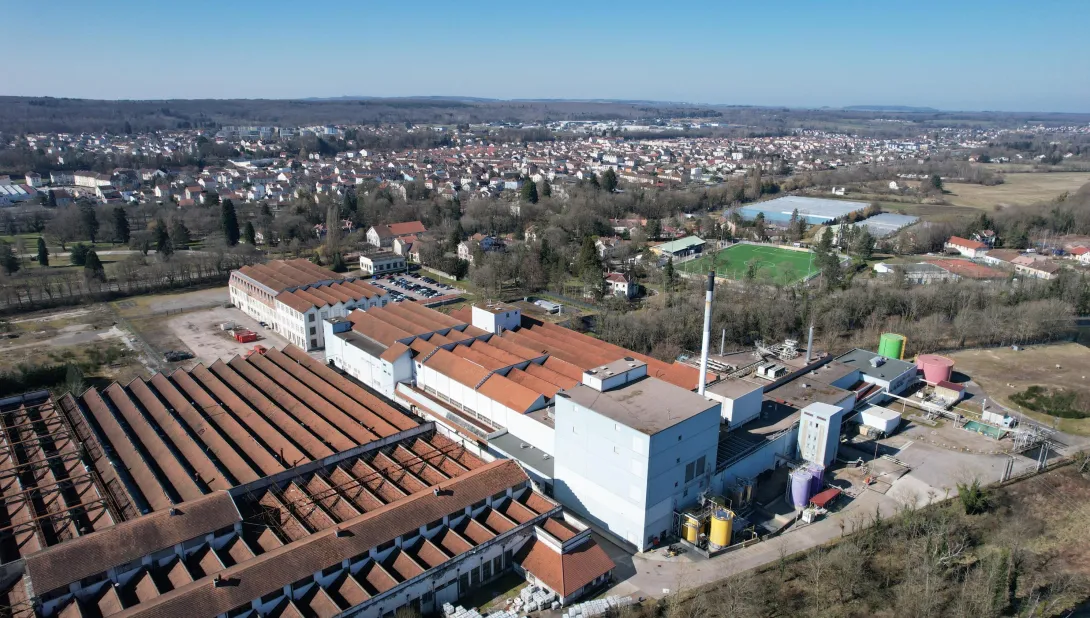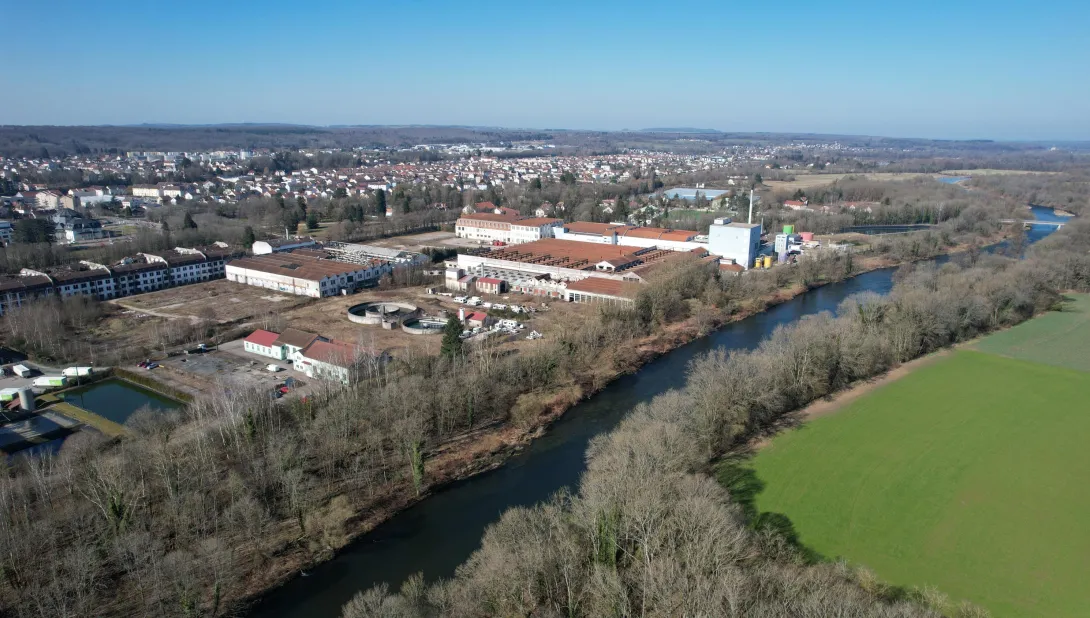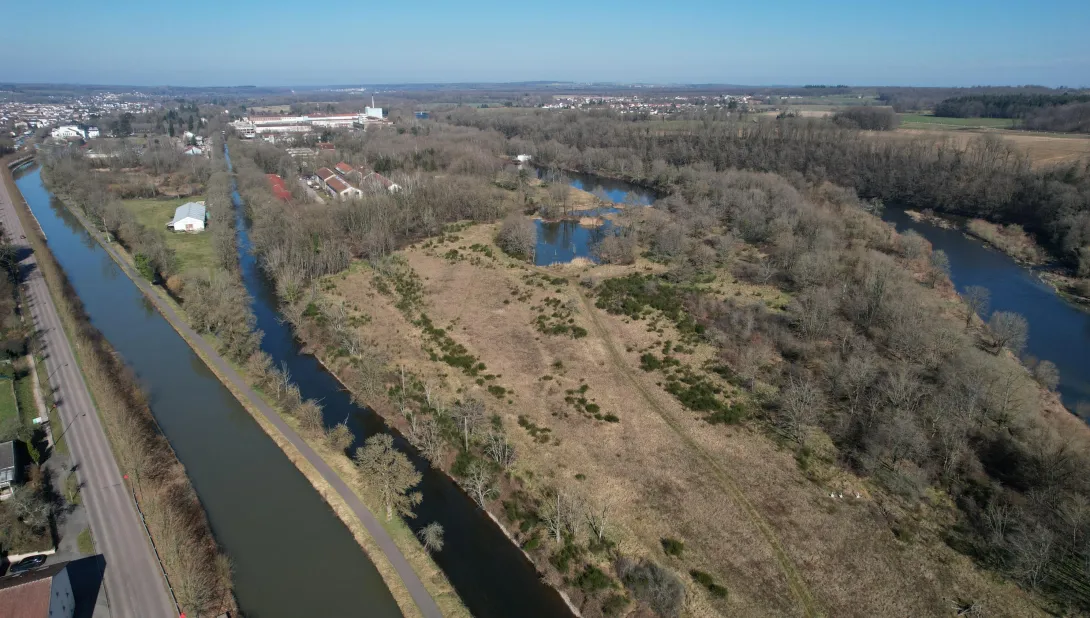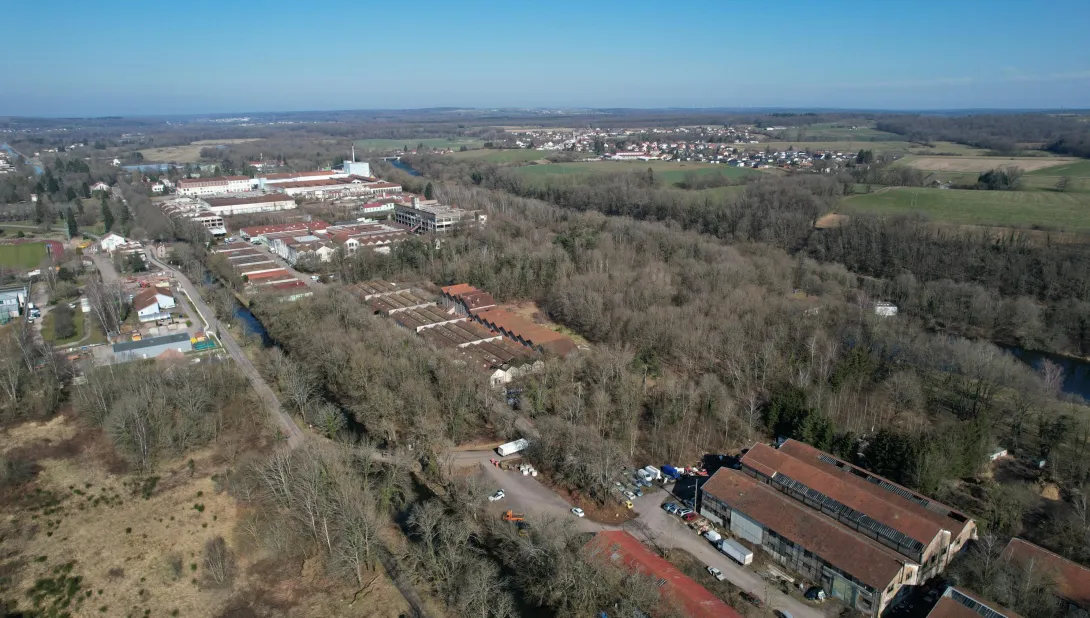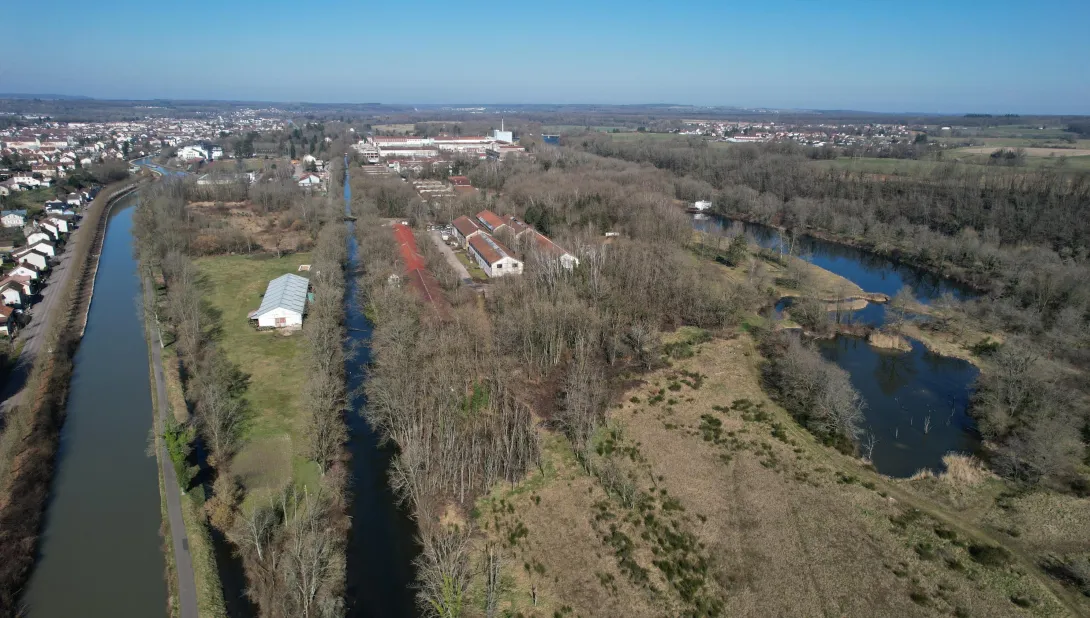Site photos
Main informations
50 hectares available
Site description
The BTT site is one of the few land reserves which, thanks to its position close to a main road (RN57) and its surface area which can be reconverted in a single block, enables the redevelopment of a predominantly industrial wasteland, as part of an EIT approach, in southern Lorraine.
BTT was founded in 1872 to bleach, dye and print fabrics. BTT played an important role in Thaon's development from an agricultural village to an industrial town. The company was liquidated in 2003, leaving a landholding of around 73 ha.
The site remains marked by this glorious industrial past, and the ambition is to bring it back to life. A project agreement has been signed between the town of Thaon, the CAE and the EPFGE to carry out the requalification program.
The EPFGE is responsible for land acquisition, which will be transferred to the CAE once the 1st proto-development work has been completed. The CAE will then develop the area, with a view to selling the land or leasing the construction to industrial companies.
Location
Type of business planned
Following the example of Epinal's Green Valley, this zone, in synergy with existing industries (Viskase, world leader in cellulose hose and Anett), will host industrial activities with inter-company and inter-zone synergies (ECOPARC, Inova 3000) to create a sustainable ecosystem that meets the challenges of transition.
Available infrastructures
- Natural gas network
- Heating network
- HTA electricity network
- Specialized gas network (hydrogen, CO2, etc.)
- Direct connection to the RTE (Electricity tranmission system opertor in France) network is possible
Accessibility and service
- Urban transport networks
- Passenger rail station
- Intercity bus network
- Major roads
- Soft mobility
- HGV access
- Semi-trailer access
- Port access
Projects to improve site access
The town is currently working on a project to develop the Port and Beach esplanade, including the river stop.
Economic fabric and nearby training courses
The region boasts a remarkable industrial base in the Grand Est region, with a dense ecosystem, particularly in the wood, textile, mechanical engineering and agri-food sectors. It has a remarkable dynamic of endogenous projects, and is attractive to exogenous promoters seeking synergies with the existing ecosystem.
The industrial job pool boasts specific technical skills and a high level of qualification.
The presence of large, long-established groups (Garrett, Michelin, NSG, Fives, Viskase, etc.) is a source of synergies and mutualization for the rest of the industrial fabric.
The UIMM (Union of Metallurgies Industries), located in the immediate vicinity of the zone, helps to match skills with industrial projects.
The region boasts:
- Research laboratories
- GARRETT Hydrogen Laboratory ;
- Pôle Engivie competitiveness cluster ;
- CRITTBois technology transfer center.
